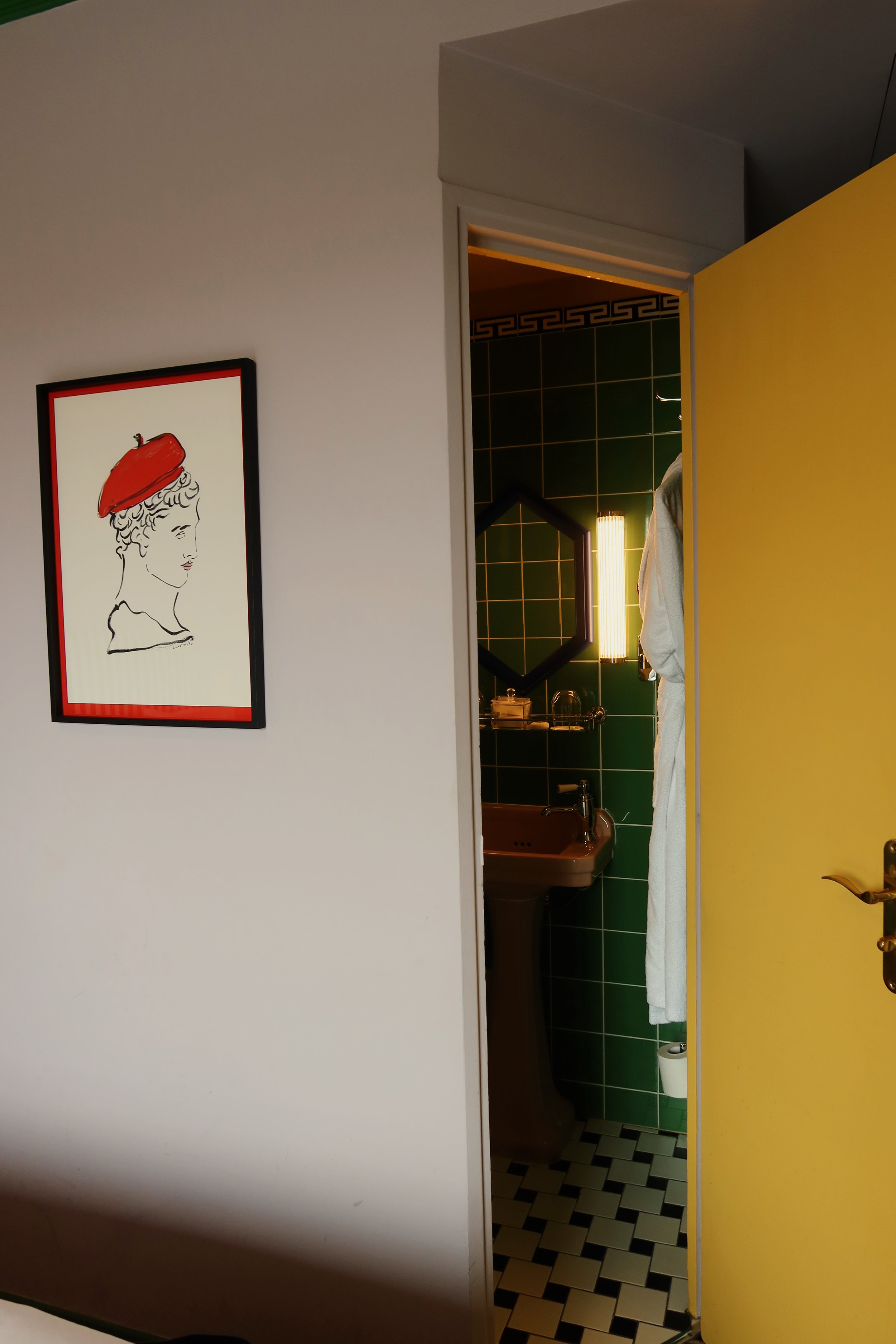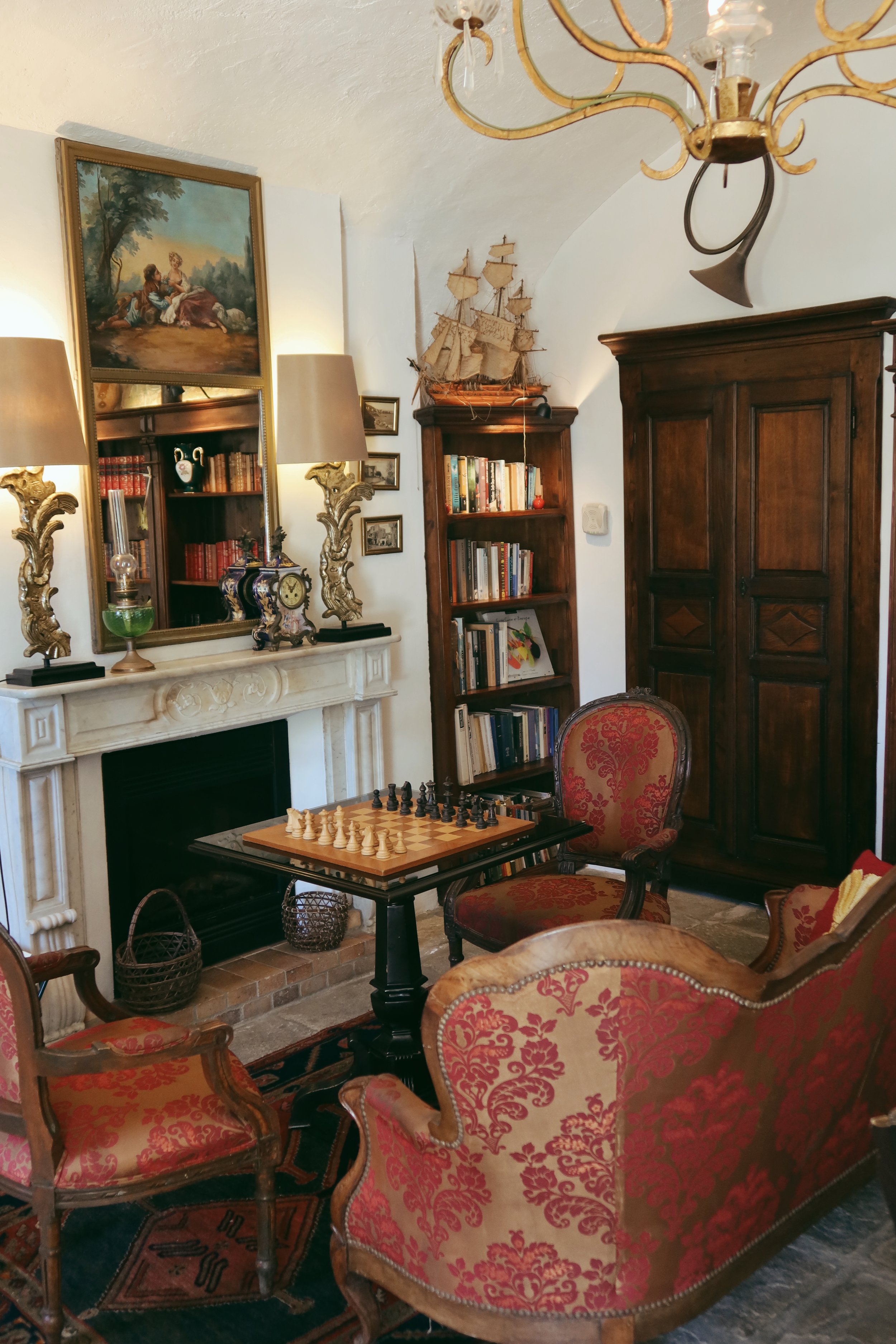Early CHECK-In
I started this signature series not as a traveler but as a design obsessed guest. Someone who walks into a hotel lobby and immediately clocks the lighting, facade, grout between the tiles, the emotional tone of an upholstery. As a designer and a long time creator, hotels became my favourite case studies to decode storytelling through design.
Through this series I explore:
How design and experience are choreographed together
What boutique hotels are doing differently in a post-chain world
The emotional + aesthetic trends shaping hospitality now
How these ideas influence my own style of interiors
I don’t just sleep in hotels, I study them.*All the photos have been shot by me!
001:Sextantio Le Grotte Della Civita, Matera
Sextantio is built into UNESCO-listed ancient caves. But unlike most “cave hotels” that over-renovate, this one honors ruin. It doesn’t try to modernize history; it collaborates with it. The result is a kind of spiritual minimalism that feels timeless, soulful, and wildly moving.
Material Honesty
You won’t find slick marble or shiny brass here. The palette is stripped down to local stone, iron, linen, and reclaimed wood. Every surface feels earthy, tactile, and honest.
Design Lens: It follows the design philosophy of Wabi Sabi and Arte Povera — beauty in imperfection, luxury in the raw. There’s an anti-trend trendiness here, rooted in emotional resonance.
Lighting as Emotion
There are no harsh LEDs. Instead, flickering candles, antique lanterns, and natural light do the heavy lifting. This creates intimacy, drama, and a sacred, chapel-like calm.
Design POV: The lighting isn’t just functional — it’s spiritual. It enhances the stillness. It also makes you the focal point of the space. (And let’s be honest, that lighting is cheatingly flattering.)
Furniture as Ghosts of the Past
Every piece feels like it was stolen from a monk’s quarters. Iron beds, handwoven linens, tables that creak. Nothing is overdesigned — but it’s all deeply intentional.
Design Trend Tie-In: This is the anti-flatpack movement. It’s slow furniture. Found. Salvaged. Meaningful. A protest against uniformity and throwaway interiors.
Spatial Storytelling
Each room tells a story — without words. The uneven floors, crumbling arches, and vaulted ceilings remind you where you are. This hotel isn’t trying to erase history; it’s offering you a bed inside of it.
As a designer, it challenged me to think:What if luxury wasn’t about adding, but subtracting everything unnecessary — until only meaning is left?002: Hotel Les Deux Gares, Paris
If you’ve ever wondered what would happen if your eccentric French grandma got her hands on a design budget and said “let’s make a hotel that screams chic chaos,” this is it. Hôtel Les Deux Gares is unapologetically extra — and that’s exactly why I love it. In Lorelai Gilmore’s words, this is what I imagine the inside of my brain to look like.
DESIGN LENS:
• Maximalism works when it’s intentional and full of personality.
• Eclecticism doesn’t mean random — it means brave..
Clash, but make it couture.
Green, purple, red, and lemon yellow — and yet, somehow… it sings. No fear, just flair.
• Every corner has a punchline.
From plaid wallpaper to striped couches — it’s visual storytelling with a mischievous French accent.
• Luke Edward Hall went rogue.
British designer, lover of color, gave this place its signature electric charm. Like living inside a sketchbook — but sexy. What I love is to see the mix of English and French, floral wallpapers and Victorian drapery done so effortlessly.
• Bathrooms = vintage cinema dream.
Tiles, mirrors, and curves that belong in a Jean-Luc Godard film
What I learnt was that you don’t need to tone it down to be taken seriously. You need to own your style unapologetically.
This stay reminded me why I started Early Check-In — to spotlight the hotels that are pushing the boundaries of traditional hospitality design. Places that look you in the eye and say:
“We don’t do boring here.”
Design Trend Tie-In:.
The Rise of ‘Clash & Curate’:
The new trend isn’t matching — it’s mixing. Playful contradiction is the new luxury.
• Storytelling Interiors:
Each room feels like a set, each hallway like a scene. Hotels are now emotional experiences, not just aesthetic ones.
• Maximalism is back — but it’s smarter now.
It’s not just more stuff, it’s more soul
As a designer it made me wonder, how do trends become timeless when filtered through personality? What makes a trend transcend the timeline?003: Hotel Castel Brando, Corsica
This mansion turned hotel was built in 1853 by a doctor of the Napoleonic army, and was later taken over and improved by a local. In 1990, Jöelle and Jean Paul Pieri, acquired this family house and restored it to life and make Castel Brando a particular address, a unique place which reflects the Corsican hospitality.
I first saw this property in the movie Bollywood Tamasha and as a huge fan of the movie, had my heart set to travel here and explore the cap corse. After waiting for 10 odd years I decided to stay at the same hotel for a full circle moment and boy did I have one! Let’s dive into the design straight:
Design Notes from a Modern Nostalgic:
• Architecture with a slow heartbeat.
The neoclassical bones are left untouched — from Corinthian columns to arched windows — letting the space breathe in its own history. My favourite is the dining around the Olive tree, makes the place feel
• Color palette = sun-faded elegance.
Warm whites, sage greens, terracotta, and weathered wood. A masterclass in understated romance.
• Layered without clutter.
Antiques that aren’t trying too hard. Wicker chairs, paintings, heirloom objects — the kind of curation that says “these were passed down,” not “these were bought yesterday.”
Trend lens for the future of boutique hospitality:
• Modern minds want slow luxury.
Guests are trading opulence for atmosphere. Not marble, but memory.
• The ‘Emotional Heritage’ trend.
Interiors that feel passed down, not plastered on. Authenticity isn’t styled — it’s felt.
• “Local soul” is the new five-star.
Corsican tiles, Corsican linens, Corsican calm. Global travelers are craving hyper-local details. Castel Brando delivers.
As a designer this stay made me think:Why does heritage hit harder when it’s not over-polished?
The cracks, the patina, the lived-in charm — why does that feel more luxurious than five-star gloss?




















